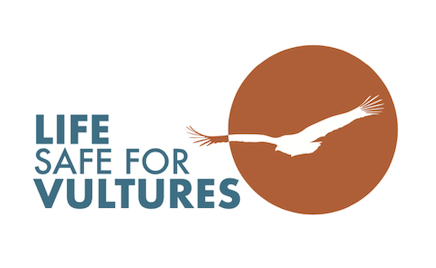The female Griffon Vulture Caniga travelled from Sardinia to Corsica, enduring an amazing cross-border flight of 252 km, partly over the Mediterranean Sea. This is the first record of such a movement to Corsica, where Griffon Vultures have been absent for decades. How long will ‘Caniga’ stay in Corsica?

Griffon Vulture Caniga travels from Sardinia to Corsica
On 3 April 2023, Caniga, a female Griffon Vulture (Gyps fulvus) released in Sardinia, travelled from Mount Limbara in Tempio (Sardinia) to Cape Corso in northern Corsica (France). Caniga’s movements are being followed by the University of Sassari (Department of Veterinary) thanks to the GPS transmitter that Caniga received before being released in the wild, within the LIFE Under Griffon Wings project.
Caniga hatched in the wild in Spain in 2018 and after being found injured, she was rehabilitated at the AMUS Wildlife Recovery centre in Extremadura. The bird, together with 11 other Griffon Vultures, was donated to the project by the Junta de Extremadura and transported by the Vulture Conservation Foundation to Sardinia to help restore the locally threatened Griffon Vulture population. The vultures were received at Bonassai-Olmedo Wildlife Recovery Center for a health check-up and transferred to acclimatisation cages at Monte Minerva (managed by Regional Agency Forestas), where they stood for some months to get familiarized with their new landscape. Ahead of Caniga’s release, on 22 October 2019, she was fitted with a GPS transmitter, which is still working since then and sending valuable information about her movements!

Is Canigo exploring a new home, or will she return to Sardinia?
Canigo is a serious explorer. Flying freely across Sardinian skies since 2019, she made it to the very south, the peninsula of Capo Teulada, a couple of years ago and has been a frequent visitor of the Asinara National Park, on the northern side of the island. In recent years, Canigo has mainly frequented the northwestern region, the area between Bosa, Macomer and Alghero.
On 3 April, around 2 pm, Canigo arrived in Bonifacio (Corsica) and continued her journey northwards. So far, it is unknown if Canigo is travelling alone or with other untagged Griffon Vultures. The bird’s movements are being monitored by partners at the University of Sassari and colleagues from the Parc naturel régional de Corse (PNRC) are also committed to monitoring the bird, in a cross-border effort to see how this record-breaking journey will evolve.
This is the first record of a Griffon Vulture flying from Sardinia to Corsica, where there are no other colonies of the species. The Bearded Vulture is the only vulture species breeding on this French Island. Unfortunately, the local population of the species has decreased sharply in recent years and is in danger of extinction. Ongoing reintroduction and conservation efforts within the LIFE GYPRESCUE project aim to prevent the extinction of the Bearded Vulture population on the island, one of the last autochthonous breeding colonies in Europe.
Restoring the Griffon Vulture population in Sardinia
In Sardinia, the Griffon Vulture was once distributed across the entire island until the 1940s. After the Second World War, the population dropped from 800-1200 individuals to only 130 in 2013 and is confined to the northwest area of the island. It is the last autochthonous breeding population of vultures in Italy, and therefore, it holds an important genetic heritage. To increase the Griffon Vulture population and improve its conservation status in Sardinia, the LIFE Under Griffon Wings project gave a boost to the local population.
Between 2015-2020, 64 Griffon Vultures were transferred to Sardinia and released. Some were captive-bred birds, coming from Holland and Germany, but the majority were juveniles that hatched in the wild in Spain and were transferred to the island, thanks to an ongoing collaboration with Junta de Extremadura. The Vulture Conservation Foundation helped in the transport of Vultures from Spain and gave technical support in the release method defined and in other anti-poisoning activities that were implemented. The Griffon Vulture guild has been improving in recent years thanks to the ongoing efforts of many local and international partners. Read more about the project’s results in the Layman’s Report.
LIFE Safe for Vultures

LIFE Safe for Vultures is a new project co-financed by the EU’s LIFE Programme, acting as the first step to the restoration of the vulture guild in Sardinia. The University of Sassari leads the project in collaboration with Agenzia Regionale Forestas, Sardegna Corpo Forestale, E-Distribuzione and the Vulture Conservation Foundation. LIFE Safe for Vultures builds on the work of the successful LIFE Under Griffon Wings, with the ultimate objective for Griffon Vultures to regain their historic ranges and distribution areas from the central-eastern part of Sardinia to the south and at the same time promote the long-term survival of the species on the island. The project team is working to expand the network of farm feeding stations, create several anti-poison dog units to tackle wildlife poisoning, establish an additional feeding station in the south of the island, restock the population by importing 40 additional Griffon Vultures and reduce the threat of collision and electrocution with energy infrastructures.




